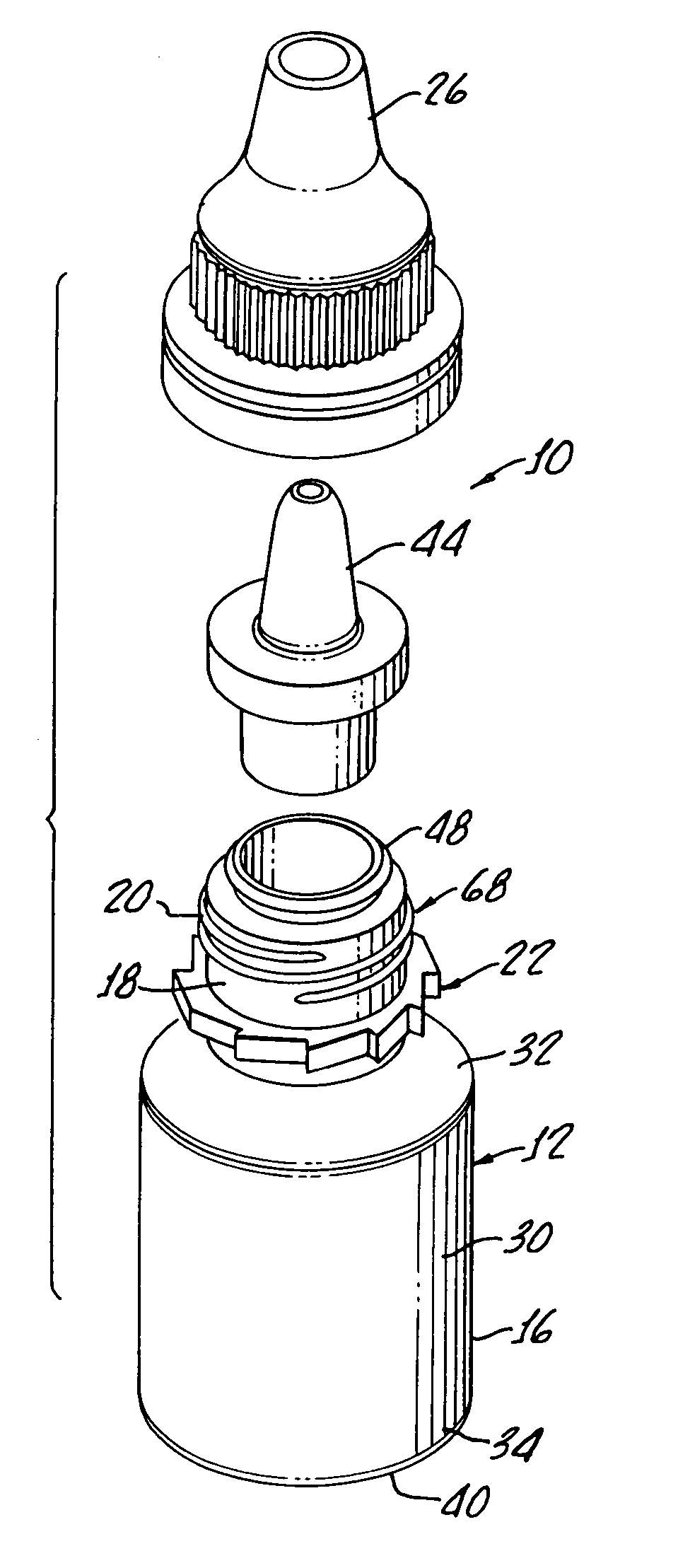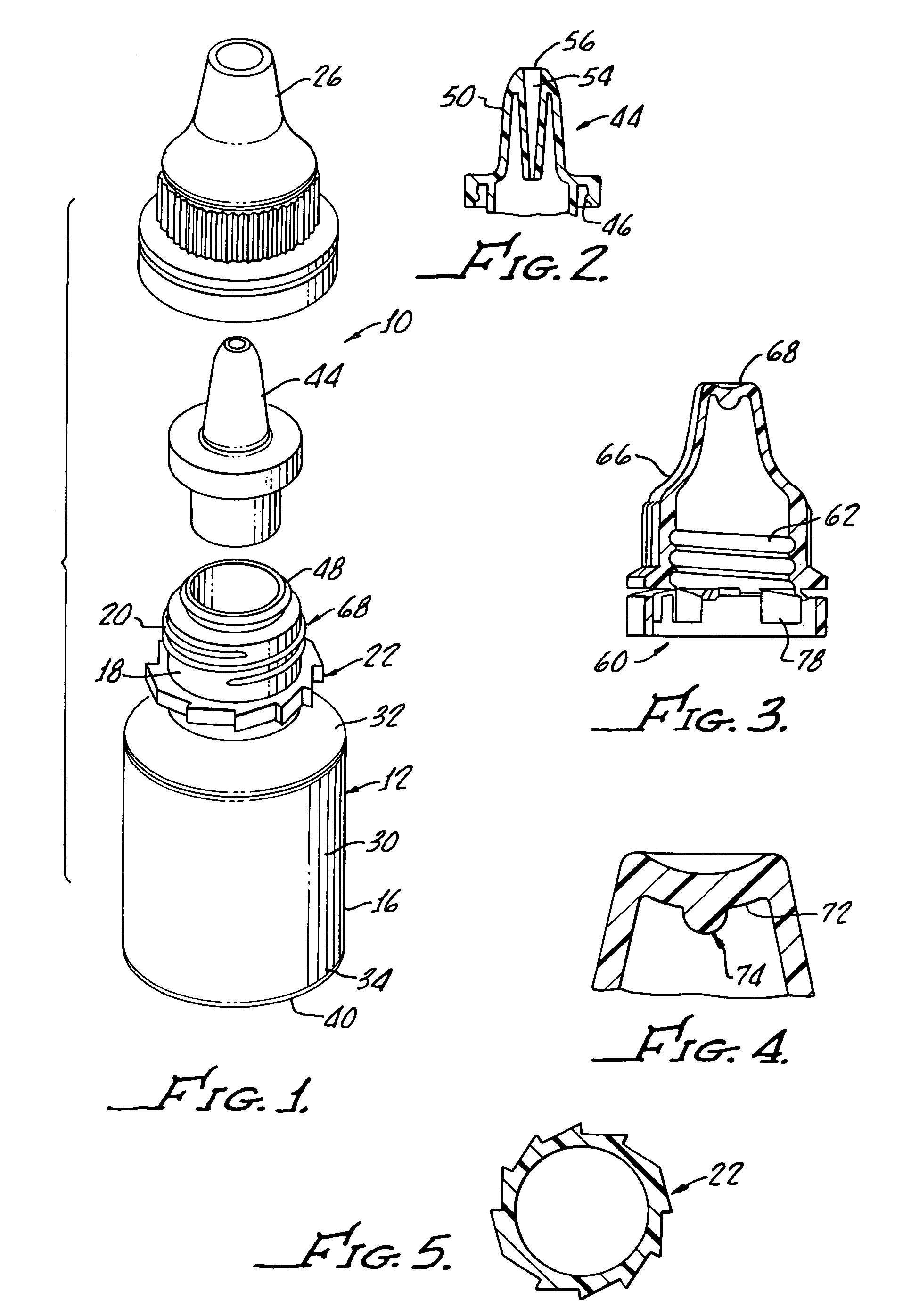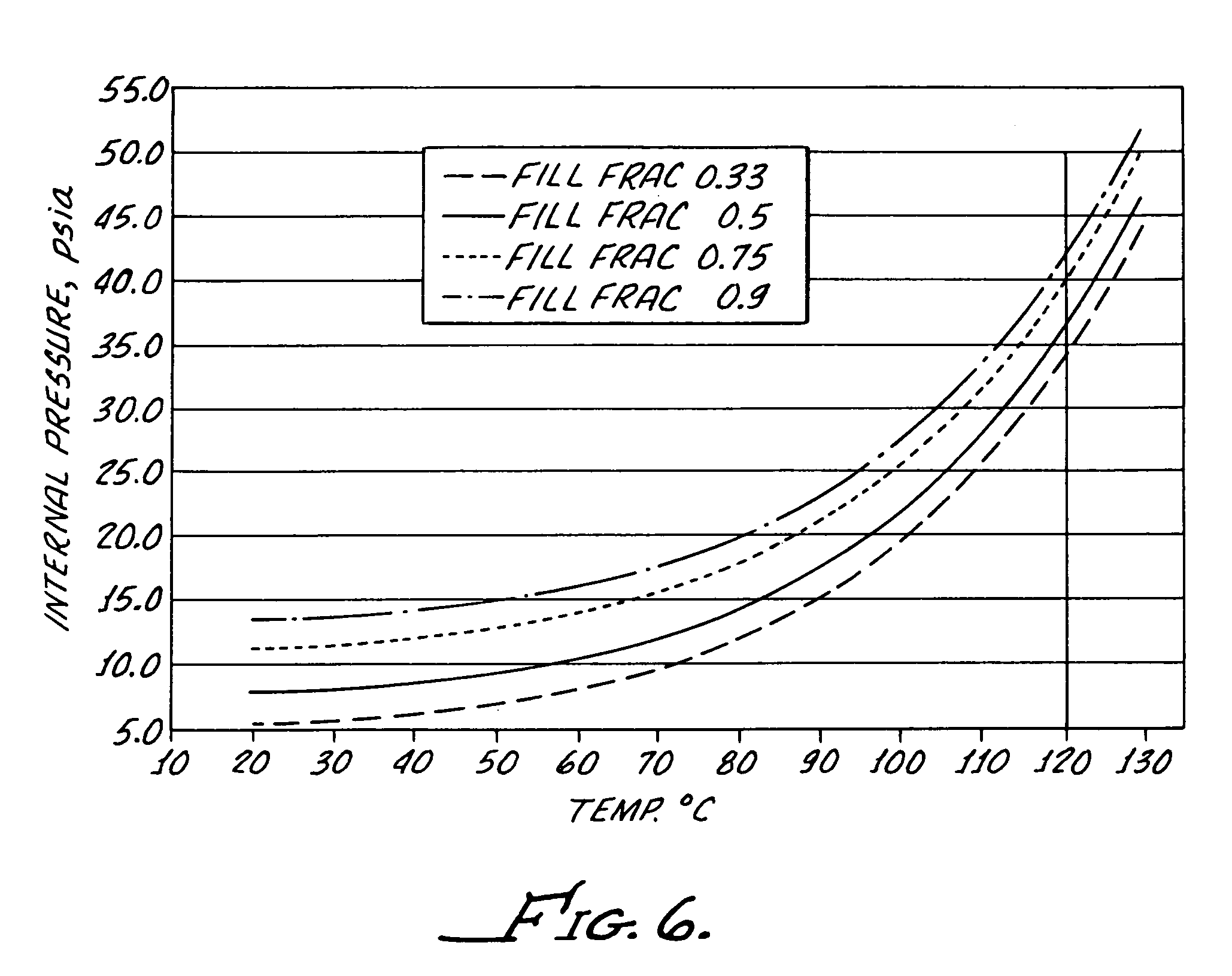Autoclaveable small-volume dropper bottle
a dropper bottle and autoclave technology, applied in the field of dropper bottles, can solve the problems of difficult to squeeze the dropper bottle, no small-volume container closure is suitable, and the drying heat sterilization requires much higher temperatures and is not as effectiv
- Summary
- Abstract
- Description
- Claims
- Application Information
AI Technical Summary
Benefits of technology
Problems solved by technology
Method used
Image
Examples
Embodiment Construction
[0028]With reference to FIG. 1, there is shown a terminally sterilizable container 10 including a polypropylene bottle 12 having a manually squeezable sidewall 16 which is formed with a thickness, as hereinafter described, which both enables manual squeezing of the bottle 12 while at the same time preventing more than about 5% water loss over a period of about 24 months.
[0029]As shown, the bottle includes a neck 18 with threads 20 molded therein along with a ratchet 22 for providing secure closure with a cap 26 in a tamper proof manner, as will be hereinafter described in greater detail.
[0030]The bottle includes a body 30 having a top rounded shoulder 32 below the neck 18 and a bottom rounded shoulder 34 subtending a concave bottle bottom 40 and the sidewall 16.
[0031]Preferably, the bottle is formed from a polypropylene provided by Phillips Marlex HLM-020 and for a 5 mL bottle has a wall thickness of between about 0.022 inches and about 0.24 inches to provide both flexibility and im...
PUM
 Login to View More
Login to View More Abstract
Description
Claims
Application Information
 Login to View More
Login to View More - R&D
- Intellectual Property
- Life Sciences
- Materials
- Tech Scout
- Unparalleled Data Quality
- Higher Quality Content
- 60% Fewer Hallucinations
Browse by: Latest US Patents, China's latest patents, Technical Efficacy Thesaurus, Application Domain, Technology Topic, Popular Technical Reports.
© 2025 PatSnap. All rights reserved.Legal|Privacy policy|Modern Slavery Act Transparency Statement|Sitemap|About US| Contact US: help@patsnap.com



